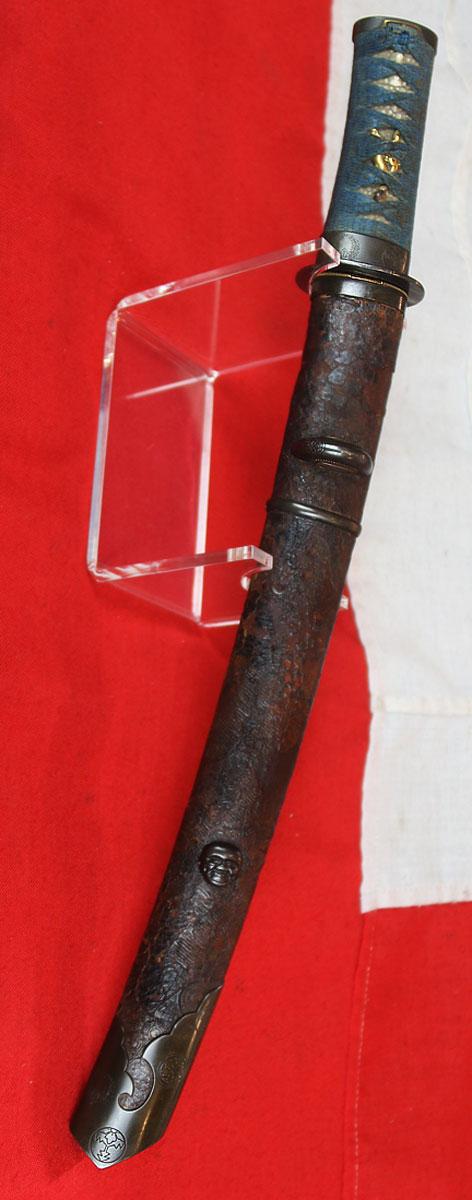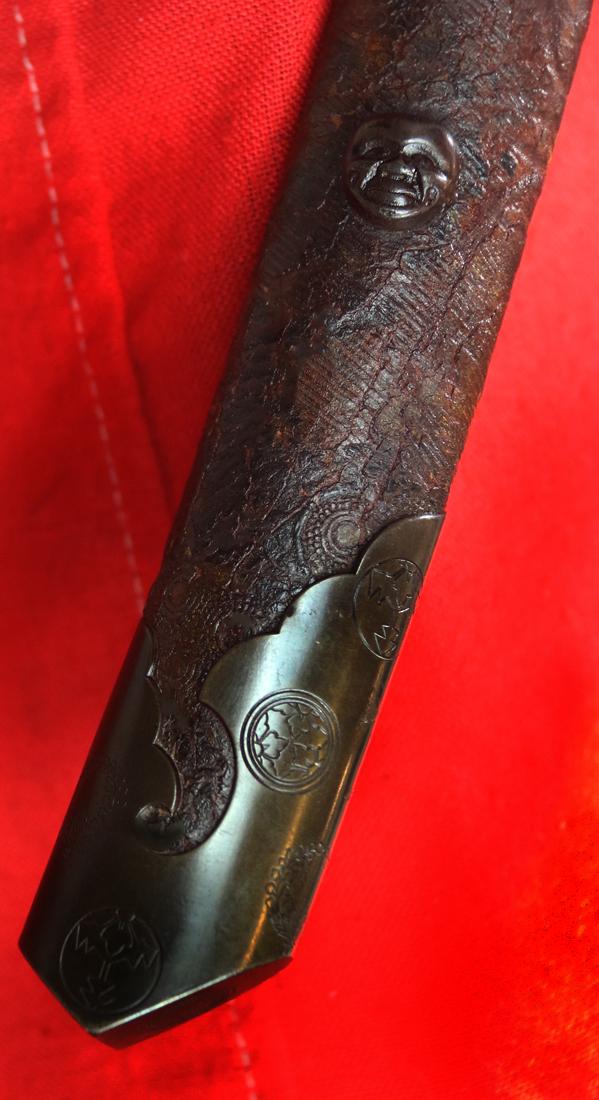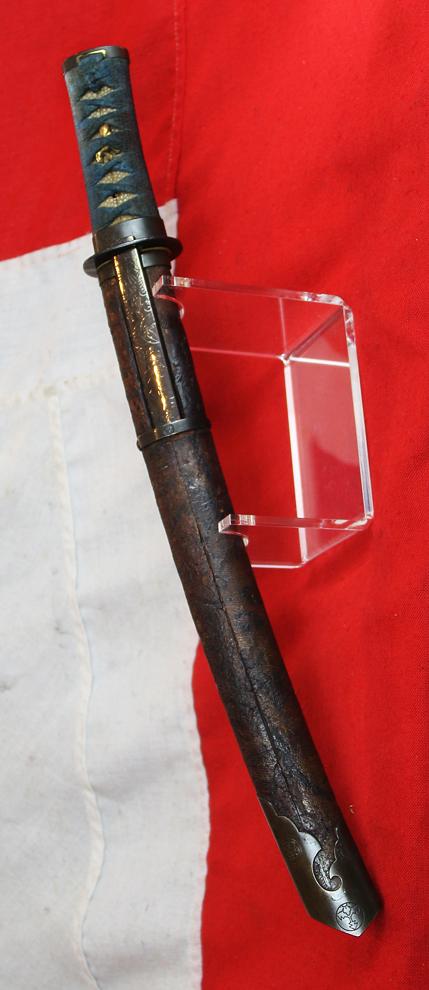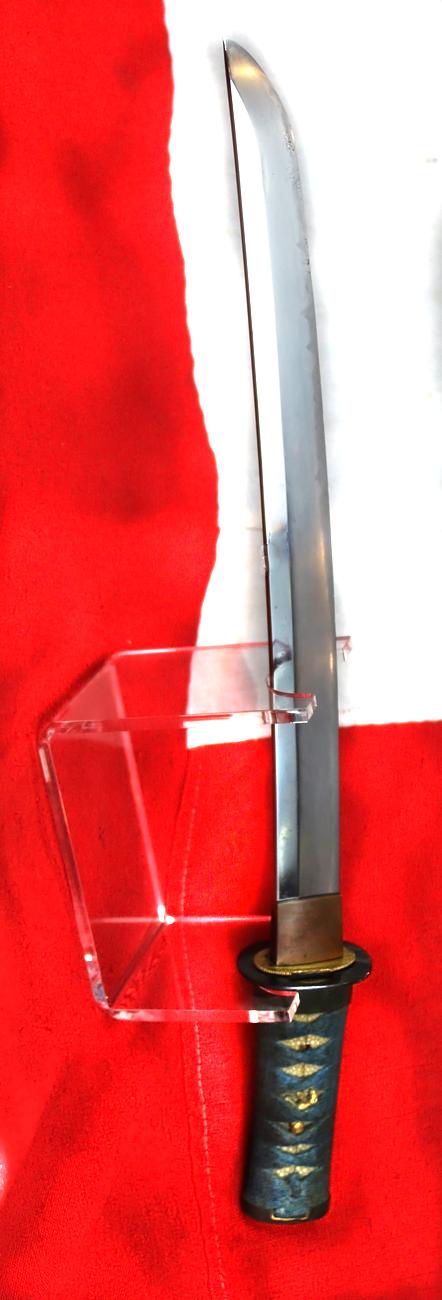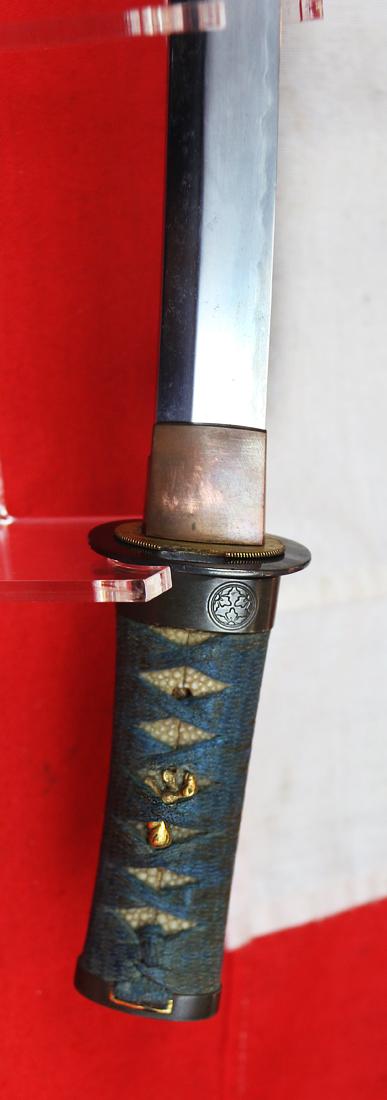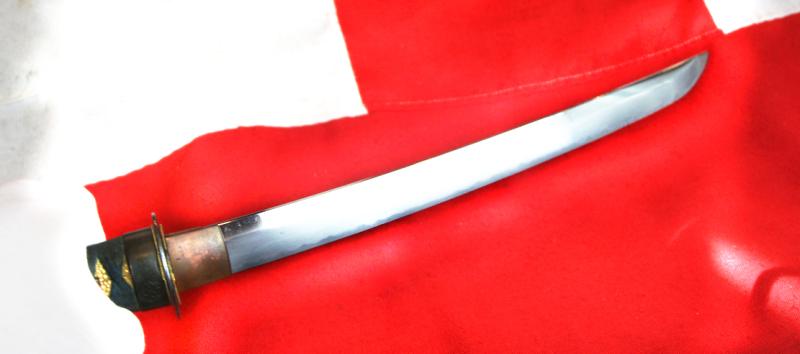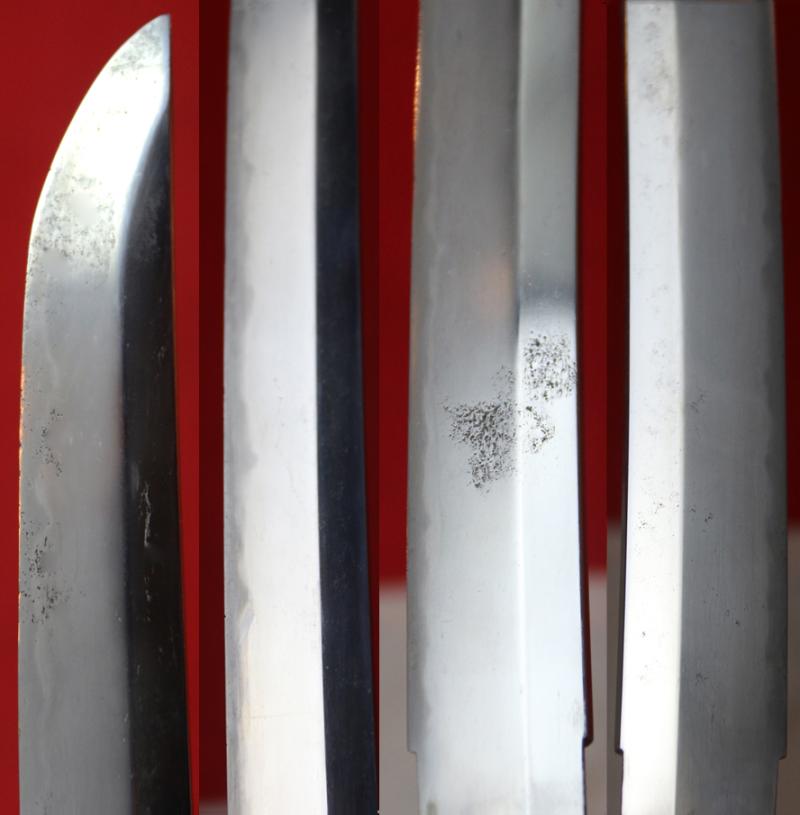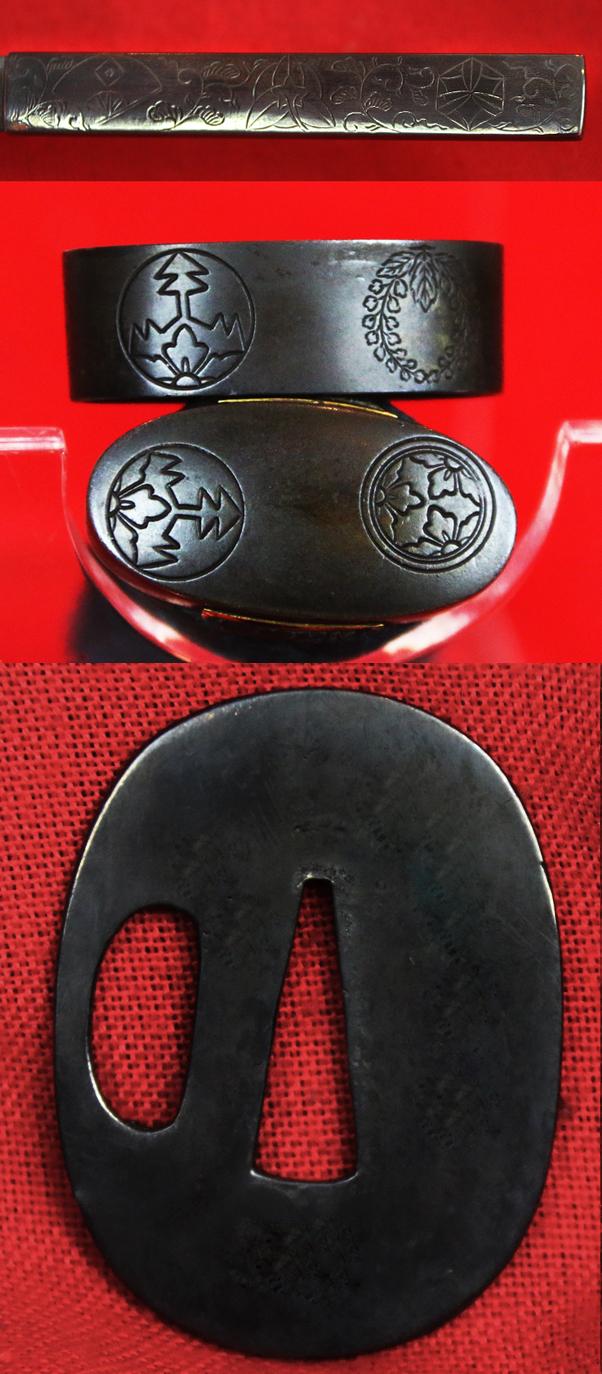A Beautiful Shinto Period, 1600's, Tanto Samurai Dagger Mounted With Fine Shibuishi Mounts Engraved with Ando Clan Mon of Agari-Fuji Mon Motif of Wisteria
The clan claims descent from Abe Hirafu and Abe Nakamaro. The clan served the Tokugawa clan during Edo Period. Their first recorded family head, Andō Naotsugu was eldest son of Andō Haruyoshi and grandson of Ando Ieshige, retainer of Matsudaira Hirotada (father of Tokugawa Ieyasu)
Decorated saya, with kozuka utility knife within a side pocket, overlaid with original 16th century Portuguese or Dutch embossed leather. The leather was brought to Japan in around 1547 with the very first European traders that arrived in their Black Ships at Tanegashima in Japan. The embossed leather was so highly prized it was first made into fabulous screens, but as the screens became damaged over the passing decades, the leather was saved, as a very precious commodity, and applied to other decorative items, such a samurai sword fittings as this one. The whole sword has been completely untouched for the past two hundred years. The blade is overall very nice indeed with a narrow gunome hamon, just a few old fingerprint marks. The superb original Edo period shibuishi mounts, made from an amalgam of patinated copper and silver are superbly engraved throughout with samurai clan mon crests including the mon of the Ando clan. Under the original blue silk tsuka-Ito are pure gold decorated ponies. The saya has a very charming applied shibuishi oni demon mask. The origin of clan mon goes far back to the latter part of Heian Period 749 to 1191 Since the Nara Period 710 to 784, when Shotokutaishi (Prince Shotoku) lived, various designs had decorated furniture and dishes which later were not only for artistic quality, but also to distinguish the property of the Kuge aristocratic class who served the Imperial court. Around the end of Heian Period, Kuge such as; Sanesue Saionji (西園寺実季) and Saneyoshi Tokudai, began placing their own Mon on their oxcarts and walked the length of Miyako-oji Street (都大路), the Main Street of the capital, showing off their Mon. This theory on the origin of Kamon is considered to be the most prevalent. Hakuseki Arai wrote in his book that the Mon used in 'Kinugasa (蓋)' was the origin of Kamon, however, others claim that this was just hearsay and the true origin remains inconclusive.
Afterwards, mon became popular among Kuge and various mon were created. For example, Sanesue Saionji used 'Saya-e,' Saneyoshi Tokudaiji used 'Mokko-mon' and the Sugawara and other clans used glitzy Kamon like Ume-mon. There was a strong sense of colour in the design, but by the Kamakura period the mon had gradually developed and evolved to take on the more traditional role and connotations of Kamon and served as proof of ownership. During the Kamakura Period, when there were many wars raging, like the Jokyu no ran and Bunei-Koan no eki, they provide many opportunities for samurai to prove themselves in battle. To identify themselves, confirm their achievements and distinguish friend from foe, samurai decorated all manner of things with Kamon, including Manmaku, flags, Umajirushi and sword scabbards. Kamon were a kind of alternate identity so, it was increasingly used among samurai to show who they were. In addition, the increased use of mon was also motivated by recognising achievements that contributed to clans they belonged to in the ancient samurai society.
Code: 24176

